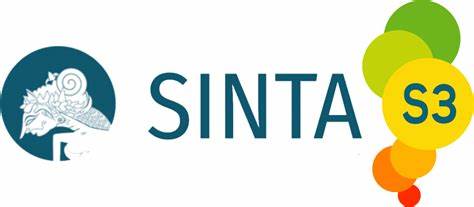PLAGIARISM IN THE INDONESIAN HIGHER EDUCATION: A STUDY OF NON-ENGLISH MAJOR UNDERGRADUATES
DOI:
https://doi.org/10.22460/eltin.v11i1.p39-46Keywords:
plagiarism, plagiarism checker, iThenticateAbstract
This study aims to investigate the prevalence of plagiarism among university students and identify the specific types of plagiarism that are most commonly committed in their written work. To examine the extent of plagiarism among university students, the present study employed a textual analysis approach and utilized the iThenticate, a professional and subscription-based plagiarism checker. A sample of 39 participants, all students from an intact class, were recruited for the study and they each independently composed argumentative essays. The essays were subjected to analysis using iThenticate to determine the prevalence of plagiarized content and manual analysis was subsequently performed to validate the results obtained from iThenticate and classify the types of plagiarism present in the essays. The results reveal that the students' essays contained a relatively low level of plagiarized content, comprising only 9.87% of the total text. The most prevalent form of plagiarism detected was mosaic plagiarism, with 39 cases identified. This was followed by verbatim plagiarism, with 16 cases identified. The findings of this research suggest that the students may have difficulty dealing with mosaic plagiarism and may require comprehensive training on proper paraphrasing techniques.
References
Akbar, A., & Picard, M. (2019). Understanding plagiarism in Indonesia from the lens of plagiarism policy: Lessons for universities. International Journal for Educational Integrity, 15(1), 1-17. https://doi.org/10.1007/s40979-019-0044-2
Bloch, J. (2012). Plagiarism across Cultures: Is There a Difference? In C. Eisner & M. Vicinus (Eds.), Originality, Imitation, and Plagiarism (pp. 219–230). University of Michigan Press.
Doss, D. A., Henley, R., Gokaraju, B., Mcelreath, D., Lackey, H., Hong, Q., & Miller, L. (2016). Assessing Domestic vs. International Student Perceptions and Attitudes of Plagiarism. Journal of International Students, 6(2), 542–565. http://jistudents.org/
Ehrich, J., Howard, S. J., Mu, C., & Bokosmaty, S. (2016). A comparison of Chinese and Australian university students’ attitudes towards plagiarism. Studies in Higher Education, 41(2), 231–246. https://doi.org/10.1080/03075079.2014.927850
Gottardello, D., del Mar Pamies, M., & Valverde, M. (2017). Professors’ perceptions of university students’ plagiarism : A literature review. BiD: Textos Universitaris de Biblioteconomia i Documentacio, 39. https://doi.org/10.1344/BiD2017.39.12
Gullifer, J. M., & Tyson, G. A. (2014). Who has read the policy on plagiarism? Unpacking students’ understanding of plagiarism. Studies in Higher Education, 39(7), 1202–1218. https://doi.org/10.1080/03075079.2013.777412
Harvard College. (2023). What Constitutes Plagiarism? Harvard College Writing Program. https://usingsources.fas.harvard.edu/what-constitutes-plagiarism
Jereb, E., Perc, M., Lämmlein, B., Jerebic, J., Urh, M., Podbregar, I., & Šprajc, P. (2018). Factors influencing plagiarism in higher education: A comparison of German and Slovene students. PLOS ONE, 13(8), e0202252. https://doi.org/10.1371/journal.pone.0202252
Jereb, E., Urh, M., Jerebic, J., & Šprajc, P. (2018). Gender differences and the awareness of plagiarism in higher education. Social Psychology of Education, 21(2), 409–426. https://doi.org/10.1007/s11218-017-9421-y
Kayaoğlu, M. N., Erbay, Ş., Flitner, C., & Saltaş, D. (2016). Examining students’ perceptions of plagiarism: A cross-cultural study at tertiary level. Journal of Further and Higher Education, 40(5), 682–705. https://doi.org/10.1080/0309877X.2015.1014320
Manley, S. (2021). The use of text-matching software’s similarity scores. Accountability in Research, 1–27. https://doi.org/10.1080/08989621.2021.1986018
Mustafa, F. (2019). “I think it is not plagiarismâ€: How little do Indonesian undergraduate EFL students understand plagiarism? Asian EFL Journal, 21(2), 74–91. https://www.researchgate.net/publication/331547836
Patak, A. A., Wirawan, H., Abduh, A., Hidayat, R., Iskandar, I., & Dirawan, G. D. (2021). Teaching English as a Foreign Language in Indonesia: University Lecturers’ Views on Plagiarism. Journal of Academic Ethics, 19(4), 571–587. https://doi.org/10.1007/s10805-020-09385-y
Stapleton, P. (2012). Gauging the effectiveness of anti-plagiarism software: An empirical study of second language graduate writers. Journal of English for Academic Purposes, 11(2), 125–133. https://doi.org/10.1016/j.jeap.2011.10.003
Sulaiman, R., & Sulastri. (2018). TYPES AND FACTORS CAUSING PLAGIARISM IN PAPERS OF ENGLISH EDUCATION STUDENTS. Inspiring: English Education Journal, 1(1), 95–104.
Warn, J. (2006). Plagiarism software: no magic bullet! Higher Education Research & Development, 25(2), 195–208. https://doi.org/10.1080/07294360600610438





